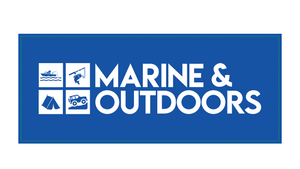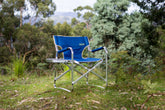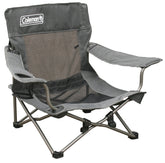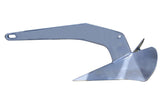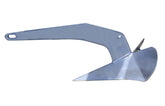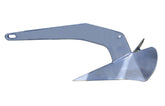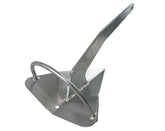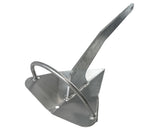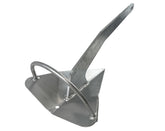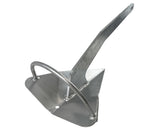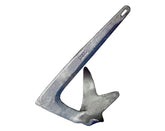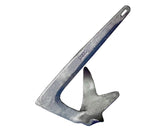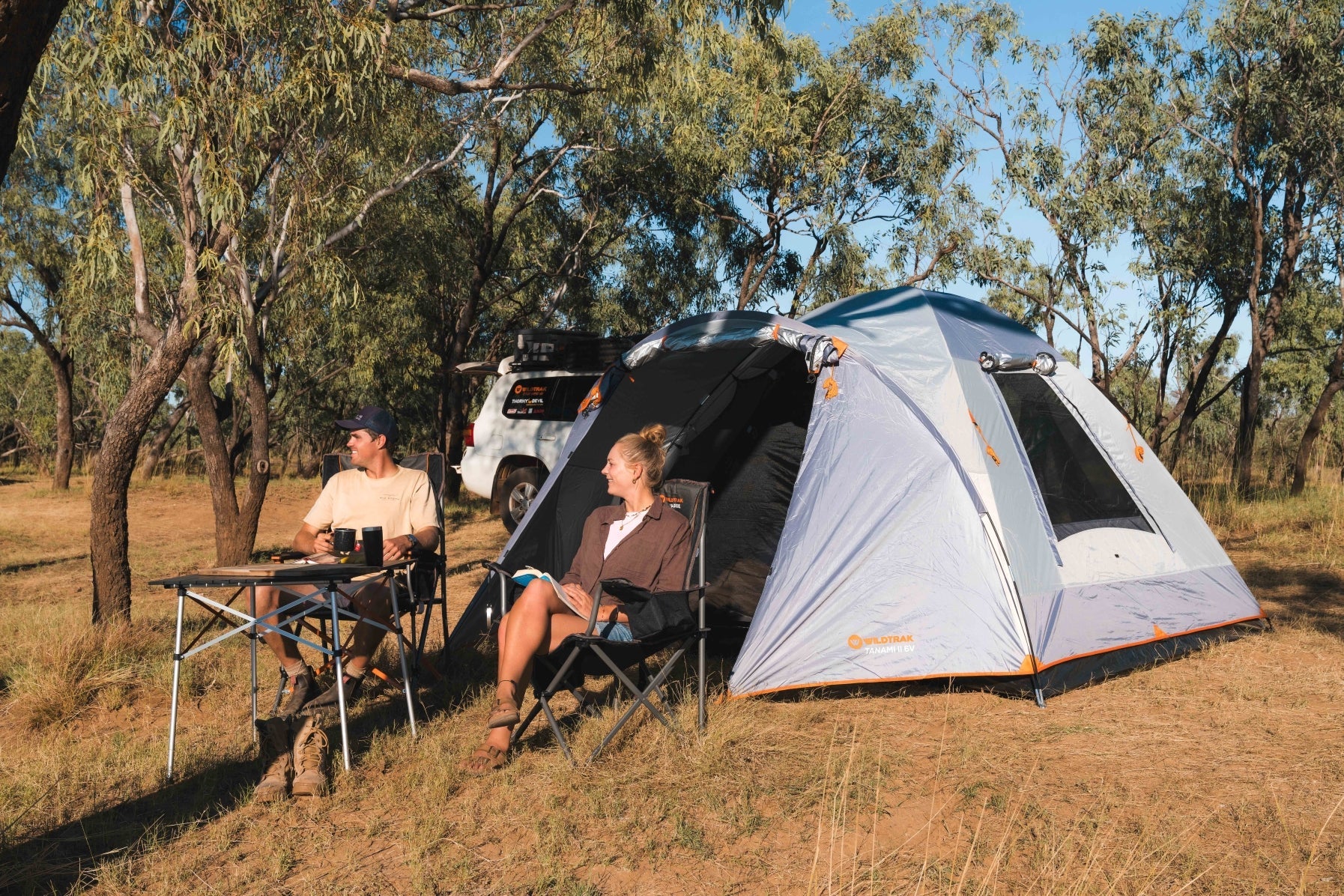ANCHOR & MOORING
Filter
431 results
20
- 10
- 15
- 20
- 25
- 30
- 50
Alphabetically, A-Z
- Featured
- Best selling
- Alphabetically, A-Z
- Alphabetically, Z-A
- Price, low to high
- Price, high to low
- Date, old to new
- Date, new to old
Sort
Sort by:
- Featured
- Best selling
- Alphabetically, A-Z
- Alphabetically, Z-A
- Price, low to high
- Price, high to low
- Date, old to new
- Date, new to old
-
Anchor ''Power'' Fixed Head 10kg
This fixed-head wing-style plough "power" anchor is a powerful, high-holding anchor constructed of high-grade steel for maximum strength. Its shank profile and ballasted tip make it self-launching and ensure that it will set immediately.- $235.00
- $235.00
- Unit price
- / per
-
Anchor ''Power'' Fixed Head 16kg
This fixed-head wing-style plough "power" anchor is a powerful, high-holding anchor constructed of high-grade steel for maximum strength. Its shank profile and ballasted tip make it self-launching and ensure that it will set immediately.- $367.00
- $367.00
- Unit price
- / per
-
Anchor ''Power'' Fixed Head 6kg
This fixed-head wing-style plough "power" anchor is a powerful, high-holding anchor constructed of high-grade steel for maximum strength. Its shank profile and ballasted tip make it self-launching and ensure that it will set immediately.- $141.00
- $141.00
- Unit price
- / per
-
Anchor Bag Large
Anchor bag to suit the Grapnal Folding Anchors. The bag is padded and is available in two sizes- $18.70
$0.00- $18.70
- Unit price
- / per
-
Anchor Bag Small
Anchor bag to suit the Grapnal Folding Anchors. The bag is padded and is available in two sizes- $15.40
$0.00- $15.40
- Unit price
- / per
-
Anchor Bull Galv 10kg
Introducing the Bull Anchor, a premium solution for secure anchoring in diverse marine environments.- $390.00
$354.90- $390.00
- Unit price
- / per
-
Anchor Bull Galv 15kg
Introducing the Bull Anchor, a premium solution for secure anchoring in diverse marine environments.- $529.00
$481.10- $529.00
- Unit price
- / per
-
Anchor Bull Galv 4kg
Introducing the Bull Anchor, a premium solution for secure anchoring in diverse marine environments.- $200.00
$182.00- $200.00
- Unit price
- / per
-
Anchor Bull Galv 6kg
Introducing the Bull Anchor, a premium solution for secure anchoring in diverse marine environments.- $273.00
$248.10- $273.00
- Unit price
- / per
-
Anchor Claw Galv. 10kg (22lb)
Design based on anchors used to secure oil rigs in the North Sea, the Claw anchor sets effortlessly by self aligning on bottom to roll upright. It holds in a variety of seabeds, mainly sand and mud, and stows easily on the bow roller of most boats. ...- $205.00
$186.00- $205.00
- Unit price
- / per
-
Anchor Claw Galv. 15kg (33lb)
Design based on anchors used to secure oil rigs in the North Sea, the Claw anchor sets effortlessly by self aligning on bottom to roll upright. It holds in a variety of seabeds, mainly sand and mud, and stows easily on the bow roller of most boats. ...- $275.00
$249.55- $275.00
- Unit price
- / per
-
Anchor Claw Galv. 1kg (2.2lb)
Design based on anchors used to secure oil rigs in the North Sea, the Claw anchor sets effortlessly by self aligning on bottom to roll upright. It holds in a variety of seabeds, mainly sand and mud, and stows easily on the bow roller of most boats. ...- $15.90
$24.65- $15.90
- Unit price
- / per
-
Anchor Claw Galv. 20kg (44lb)
Design based on anchors used to secure oil rigs in the North Sea, the Claw anchor sets effortlessly by self aligning on bottom to roll upright. It holds in a variety of seabeds, mainly sand and mud, and stows easily on the bow roller of most boats. ...- $338.00
$307.50- $338.00
- Unit price
- / per
-
Anchor Claw Galv. 2Kg (4.4lb)
Design based on anchors used to secure oil rigs in the North Sea, the Claw anchor sets effortlessly by self aligning on bottom to roll upright. It holds in a variety of seabeds, mainly sand and mud, and stows easily on the bow roller of most boats. ...- $23.50
$36.42- $23.50
- Unit price
- / per
-
Anchor Claw Galv. 30kg (66lb)
Design based on anchors used to secure oil rigs in the North Sea, the Claw anchor sets effortlessly by self aligning on bottom to roll upright. It holds in a variety of seabeds, mainly sand and mud, and stows easily on the bow roller of most boats. ...- $520.00
$472.50- $520.00
- Unit price
- / per
-
Anchor Claw Galv. 50kg (110lb)
Design based on anchors used to secure oil rigs in the North Sea, the Claw anchor sets effortlessly by self aligning on bottom to roll upright. It holds in a variety of seabeds, mainly sand and mud, and stows easily on the bow roller of most boats. ...- $926.00
$841.50- $926.00
- Unit price
- / per
-
Anchor Claw Galv. 5kg (11lb)
Design based on anchors used to secure oil rigs in the North Sea, the Claw anchor sets effortlessly by self aligning on bottom to roll upright. It holds in a variety of seabeds, mainly sand and mud, and stows easily on the bow roller of most boats. ...- $102.00
$92.38- $102.00
- Unit price
- / per
-
Anchor Claw Galv. 7.5kg (16.5lb)
Design based on anchors used to secure oil rigs in the North Sea, the Claw anchor sets effortlessly by self aligning on bottom to roll upright. It holds in a variety of seabeds, mainly sand and mud, and stows easily on the bow roller of most boats. ...- $155.00
$141.36- $155.00
- Unit price
- / per
-
Anchor Claw S/S 10KG/22LB
The design of this stainless steel anchor is based on that of anchors used to secure oil rigs in the North Sea. This claw anchor is constructed of high-grade 316 stainless steel, cast in a single piece. Available in sizes from 1-30kg- $819.00
$0.00- $819.00
- Unit price
- / per
-
Anchor Claw S/S 15KG/33LB
The design of this stainless steel anchor is based on that of anchors used to secure oil rigs in the North Sea. This claw anchor is constructed of high-grade 316 stainless steel, cast in a single piece. Available in sizes from 1-30kg- $1,176.00
$0.00- $1,176.00
- Unit price
- / per

